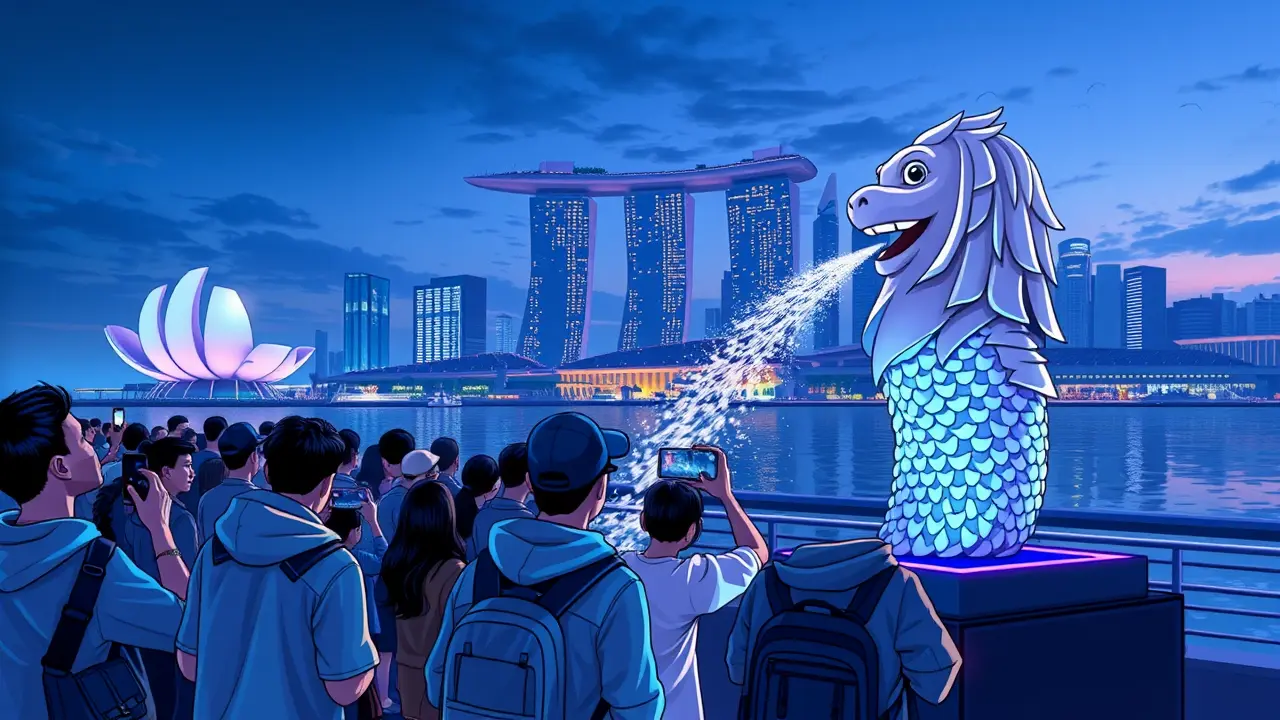
Othertravel & tourism
Chinese Tourists Flock to Singapore for 'Da Ka' Moments.
ME
Megan Hill
4 hours ago7 min read
The Singaporean sun beats down on the Merlion, that iconic half-fish, half-lion statue spitting water into Marina Bay, and surrounding it is a familiar sight: a queue of tourists from mainland China, not just looking, but posing. They are engaging in the cultural phenomenon of 'da ka'—a Mandarin term derived from 'punching a card'—which means visiting a famous spot primarily to capture the perfect photo or video for social media, effectively checking it off a life list.This isn't a casual holiday snap; it's a meticulously orchestrated performance of consumption and identity. Take Melody Liu, a hypothetical traveler from Shanghai who embodies this trend.She arrived with a budget of 5,000 yuan, a sum that evaporated in just seventy-two hours, not on lavish souvenirs, but on the curated experience of being there. Her essential travel gear wasn't just sunscreen; it was a long-sleeved hooded shirt with a built-in visor, a practical yet telling armor against the equatorial glare, ensuring her skin stays pale and her 'da ka' moments are flawlessly lit.The financial calculus of this is fascinating. Singapore, long known for its premium pricing, is experiencing a boom from tourists who are less price-sensitive than experience-driven.They are willing to absorb the staggering cost of a cocktail at a rooftop infinity pool or a meal at a hawker centre awarded a Michelin star because the return on investment is measured in likes, shares, and the unspoken social currency of having 'been there, done that. ' This is the new face of globalized travel, powered by platforms like Xiaohongshu and Douyin, where a destination's value is increasingly tied to its 'instagrammability.' Behind the visors and smartphone screens lies a deeper narrative of post-pandemic release and a shifting Chinese consumer psyche. After years of lockdowns and travel restrictions, there's a pent-up desire not just to see the world, but to be seen seeing it.Singapore, with its clean, safe, and efficiently glamorous facade, offers a perfect, manageable stage. It’s a 'West-lite' experience for many—familiar yet foreign, with enough linguistic and cultural touchpoints to feel accessible, but sufficiently different to confer status.The 'da ka' ritual is more than vanity; it's a form of modern-day cartography, where individuals map their social standing through geotagged visuals. The consequence for Singapore's tourism industry is profound.Hotels and attractions are now designing spaces with photogenic backdrops in mind, understanding that a unique architectural angle or a flower wall can be as big a draw as the attraction itself. Meanwhile, economists watch the influx with keen interest, seeing it as a robust indicator of discretionary spending power in the Chinese market, even amid broader economic headwinds. The trend also sparks a quiet cultural conversation about the nature of travel itself—is the memory in the mind or in the cloud? For the 'da ka' tourists flooding Singapore's gardens and boulevards, the answer is beautifully, expensively, and unequivocally both.
#Chinese tourists
#Singapore
#travel budget
#da ka
#cultural trends
#featured
Stay Informed. Act Smarter.
Get weekly highlights, major headlines, and expert insights — then put your knowledge to work in our live prediction markets.
© 2025 Outpoll Service LTD. All rights reserved.